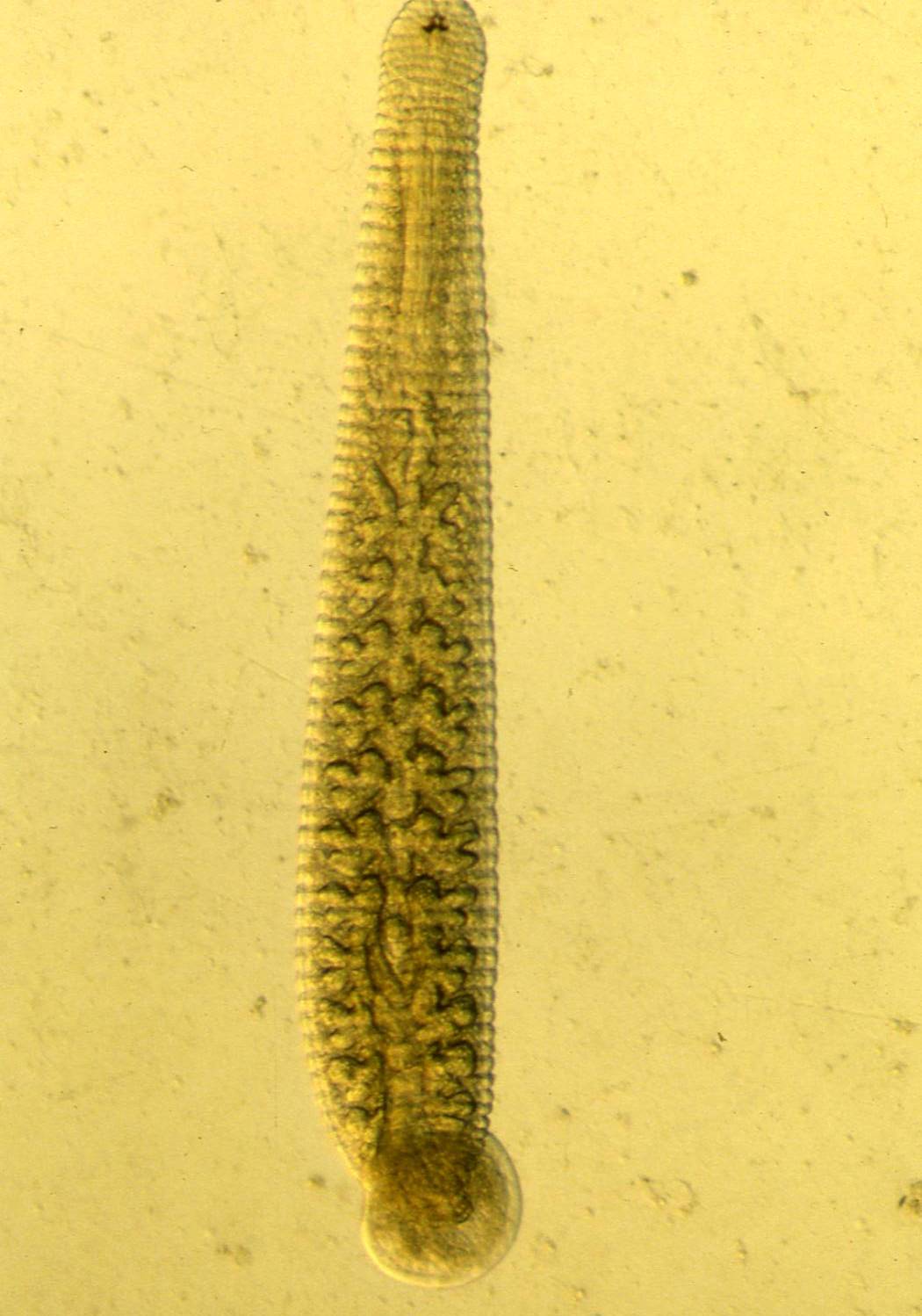
| Parasite | Batracobdella smaragdina |
|---|---|
| Taxonomy | Annelida, Hirudinea, Rhynchobdellae, Glossiphoniidae |
| Hosts | Japanese eel (Anguilla japonica) |
| Infection site | Skin |
| Clinical signs | Vestiges of blood-sucking are found on the skin (Fig. 1). |
| Parasitology | Live parasite exhibits characteristic bright green in color. The body (length 6-12 mm) is flat and smooth (Fig. 2). The parasite has 2 pairs of eyespots, 7 pairs of gastric caeca and a small anterior and posterior suckers. Usually the worm wobbles on the bottom of pond. When eel touches the anterior end of the parasite, it attaches with the anterior sucker, and sucks by its mouth. It detaches in a few hours, thus B. smaragdina is considered to be the opportunistic parasite (Ogawa et al., 1985). The sucked blood is digested within 10 days to 1 month. Thereafter, the parasite produces eggs. The adult houses the larvae in its body. |
| Pathology | Small and large haemorrhage puncta are formed in the skin and fin, respectively. The infection is not fatal because these vestiges disappear in about 2 weeks at 20. C. (Ogawa et al., 1985). |
| Health hazard | Since this parasite is not infectious to human, it is harmless in food hygiene. |
| Diagnosis | Observe the morphology of the parasite in a flattened preparation. |
| Other information | A disease outbreak of B. smaragdina occurred in the land-based eel culture in Isshiki, Aichi Prefecture in November, 1983. Although the parasite is not fatal to the host fish, the ugly appearance of infected fish reduces the product quality. It is recommended to dry and disinfect the pond with bleach powder (Ogawa et al., 1985). |
| References | Ogawa, K., S. Uno and S. Itoh (1985): Infection of cultured eel with Batracobdella
smaragdina (Hirudinea: Glossiphoniidae). Fish Pathol., 20, 67-68. |

Fig. 2. Batracobdella smaragdina
(Photos by K. Ogawa)

Fig. 1. Vestiges of blood-sucking by the leech on Japanese eel.